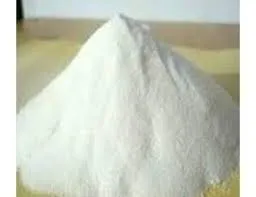
Nov . 10, 2024 09:44 Back to list
Understanding the Meaning and Significance of HPMC in Various Applications
Understanding HPMC Its Meaning and Applications
Hydroxypropyl methylcellulose (HPMC) is a versatile and widely-used polymer that holds significant importance in various industries, including pharmaceuticals, food, cosmetics, and construction. Understanding HPMC's meaning, properties, and applications can provide valuable insights into its role in modern manufacturing and formulation processes.
What is HPMC?
HPMC is a semi-synthetic polymer derived from cellulose, the primary structural component of plant cell walls. Its chemical structure consists of hydroxypropyl and methyl groups that are introduced to the cellulose backbone, offering a variety of properties that make it suitable for numerous applications. HPMC is typically available in various grades, each with distinct properties tailored for specific uses, including viscosity, solubility, and gel formation.
Properties of HPMC
1. Solubility HPMC's solubility in water depends on its degree of substitution (the ratio of hydroxypropyl and methyl groups to the cellulose backbone). This property allows it to dissolve completely in cold water, forming a clear, viscous solution. This characteristic is particularly valuable in pharmaceutical applications, where clear and homogenous solutions are essential.
2. Viscosity HPMC exhibits a wide range of viscosities, making it adaptable for different formulations. The viscosity can be modified by adjusting the concentration of HPMC, which allows formulators to achieve the desired texture and consistency in their products.
3. Thermal Stability HPMC is stable under a wide range of temperatures, making it suitable for applications that involve heating processes. This thermal stability is essential for both pharmaceutical and food industries, where heat processing is common.
4. Film-forming Ability HPMC can form films that are smooth and flexible. This quality is beneficial in applications such as coatings for tablets, where a protective layer is required to enhance stability and control the release of active ingredients.
hpmc meaning

5. Thickening Agent HPMC is commonly used as a thickening agent in various products, improving their texture and consistency without significantly altering their intrinsic properties.
Applications of HPMC
1. Pharmaceutical Industry HPMC is extensively used as an excipient in drug formulations. It serves as a binder in tablets, helping to hold ingredients together, and as a release agent that controls the rate at which active ingredients are released into the body. Additionally, HPMC is used in ocular preparations and as a matrix for sustained-release formulations.
2. Food Industry In the food sector, HPMC is employed as a thickener, stabilizer, and emulsifier. It enhances the texture of various food products, including sauces, dressings, and baked goods. Its ability to retain moisture and improve mouthfeel makes it a popular choice among food formulators.
3. Cosmetics and Personal Care HPMC is also found in a wide range of cosmetic products. It acts as a thickening and emulsifying agent, helping to stabilize creams and lotions. Its film-forming properties also contribute to the performance of cosmetics, improving the adherence of products to the skin.
4. Construction Industry In construction, HPMC is used as a component in tile adhesives, cement, and mortar. It enhances the workability and open time of these materials, making them easier to apply and allowing for modifications during installation.
5. Agriculture HPMC can be utilized in agricultural formulations as a coating agent for seeds and fertilizers, improving their adherence and effectiveness in soil.
Conclusion
Hydroxypropyl methylcellulose (HPMC) is a multifaceted polymer with a broad spectrum of applications across various industries. Its unique properties, such as solubility, viscosity, and film-forming capacity, make it an invaluable ingredient in pharmaceuticals, food products, cosmetics, construction, and agriculture. As industries continue to explore innovative formulations and products, HPMC's role is likely to expand, reinforcing its status as an essential compound in modern manufacturing processes. Whether it's improving drug delivery, enhancing food texture, or stabilizing cosmetic formulations, HPMC's significance in today's world cannot be understated.
-
Versatile Hpmc Uses in Different Industries
NewsJun.19,2025
-
Redispersible Powder's Role in Enhancing Durability of Construction Products
NewsJun.19,2025
-
Hydroxyethyl Cellulose Applications Driving Green Industrial Processes
NewsJun.19,2025
-
Exploring Different Redispersible Polymer Powder
NewsJun.19,2025
-
Choosing the Right Mortar Bonding Agent
NewsJun.19,2025
-
Applications and Significance of China Hpmc in Modern Industries
NewsJun.19,2025







